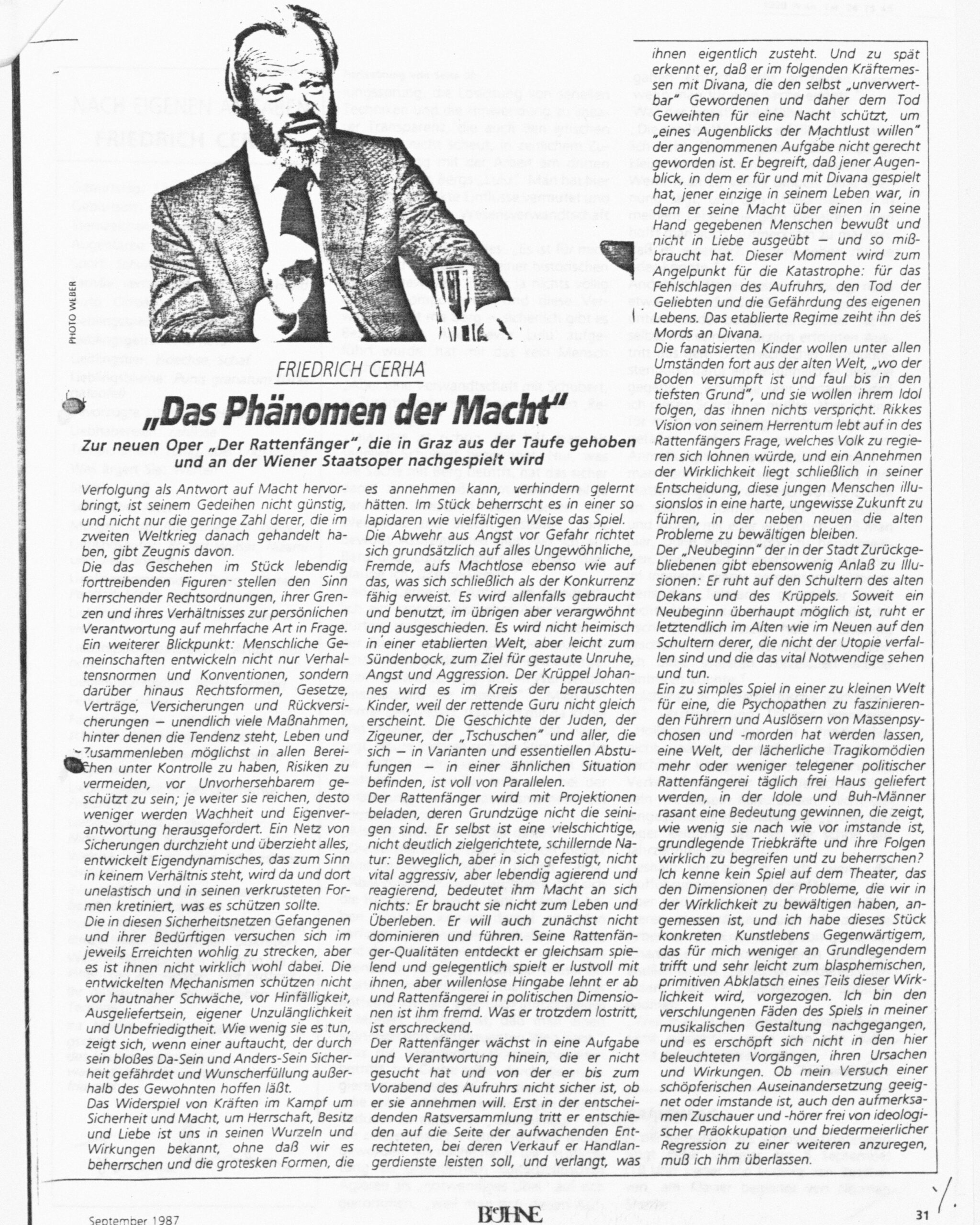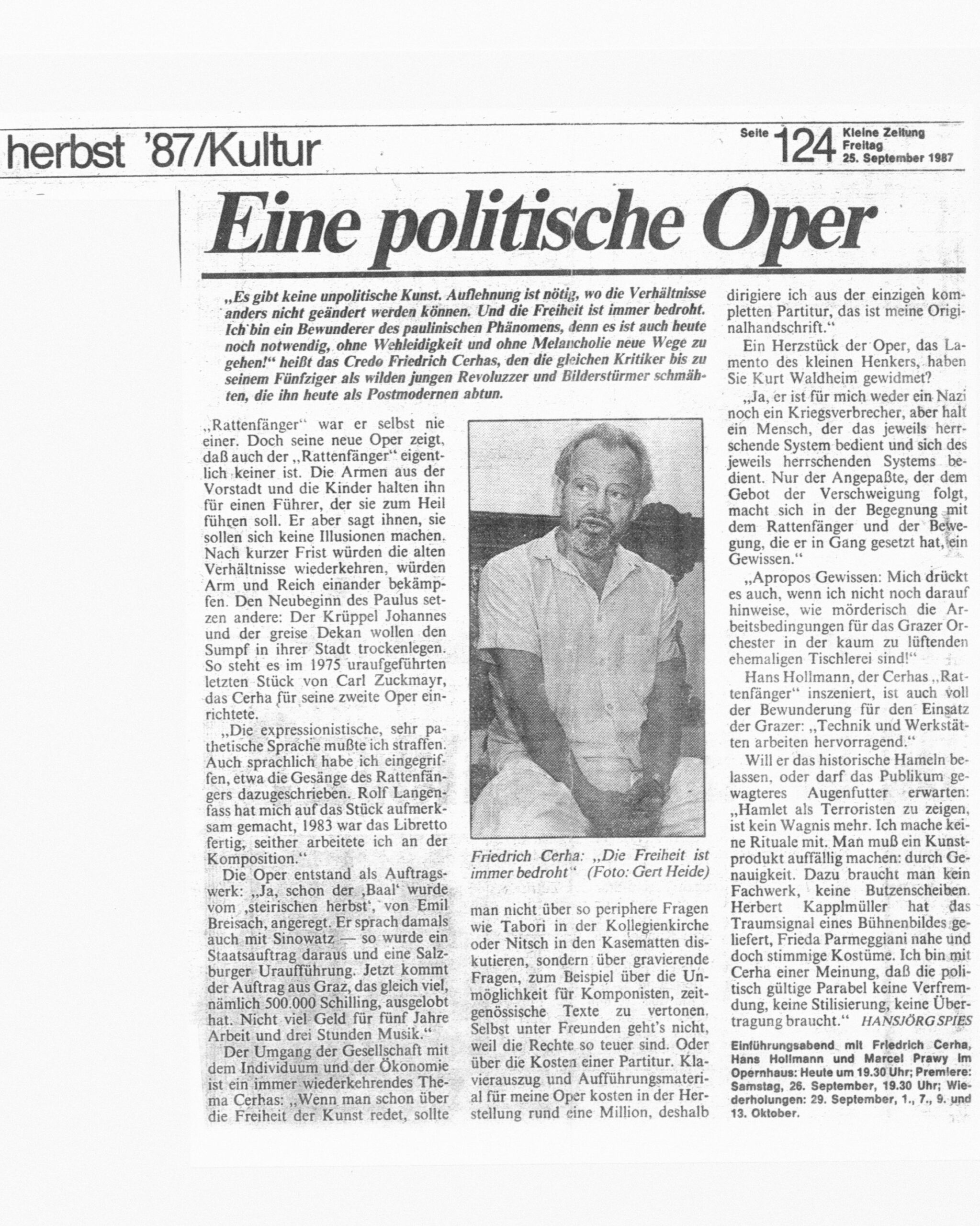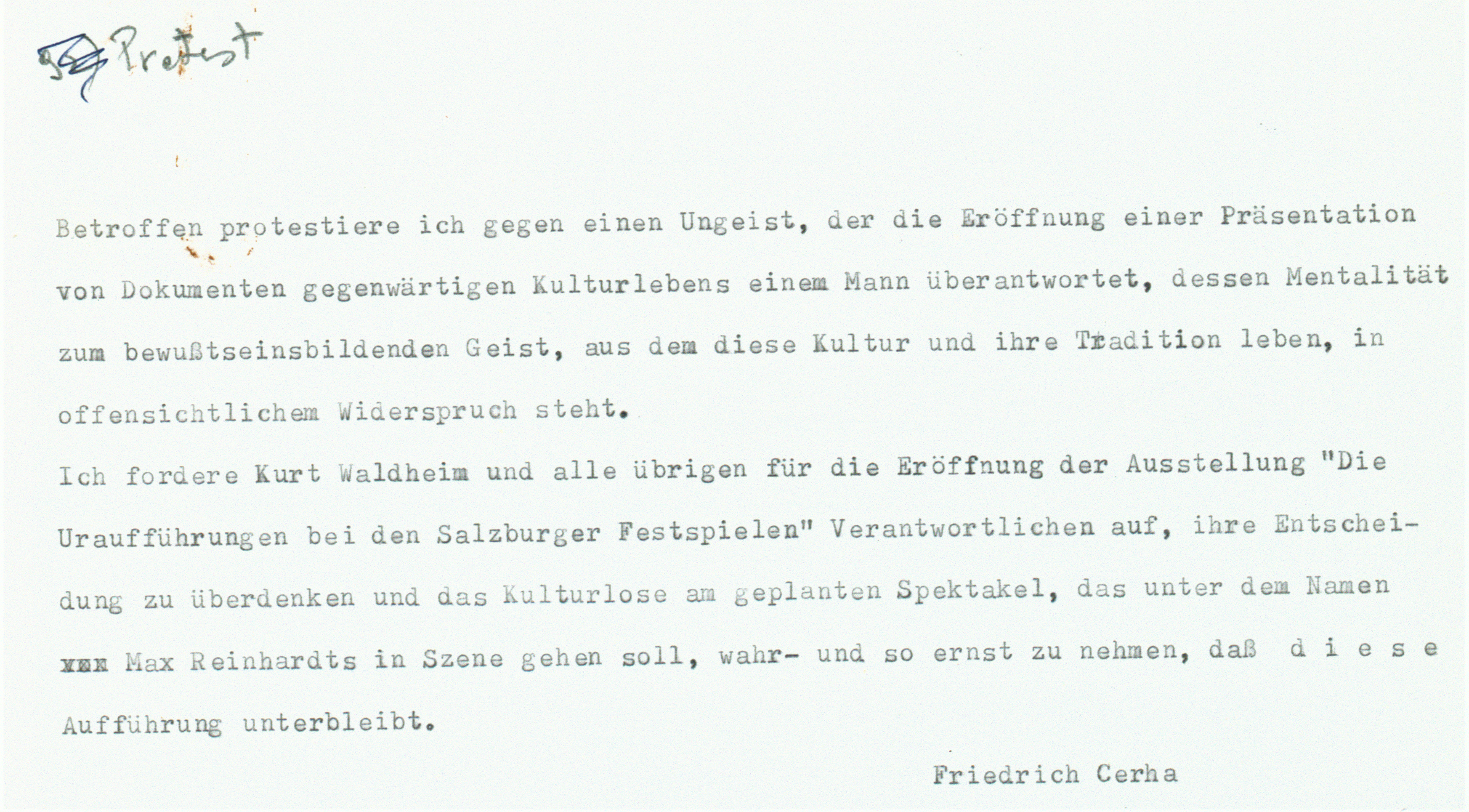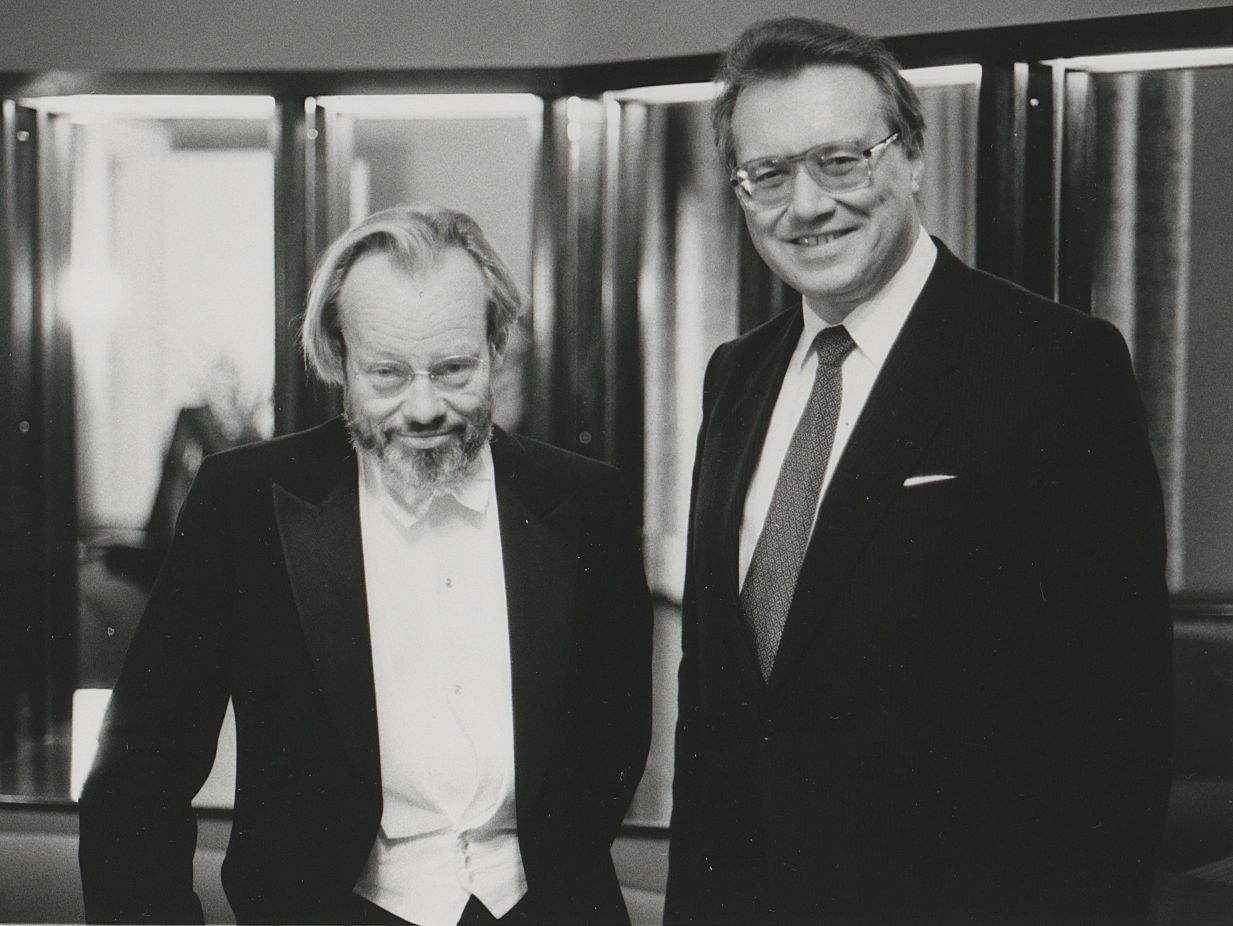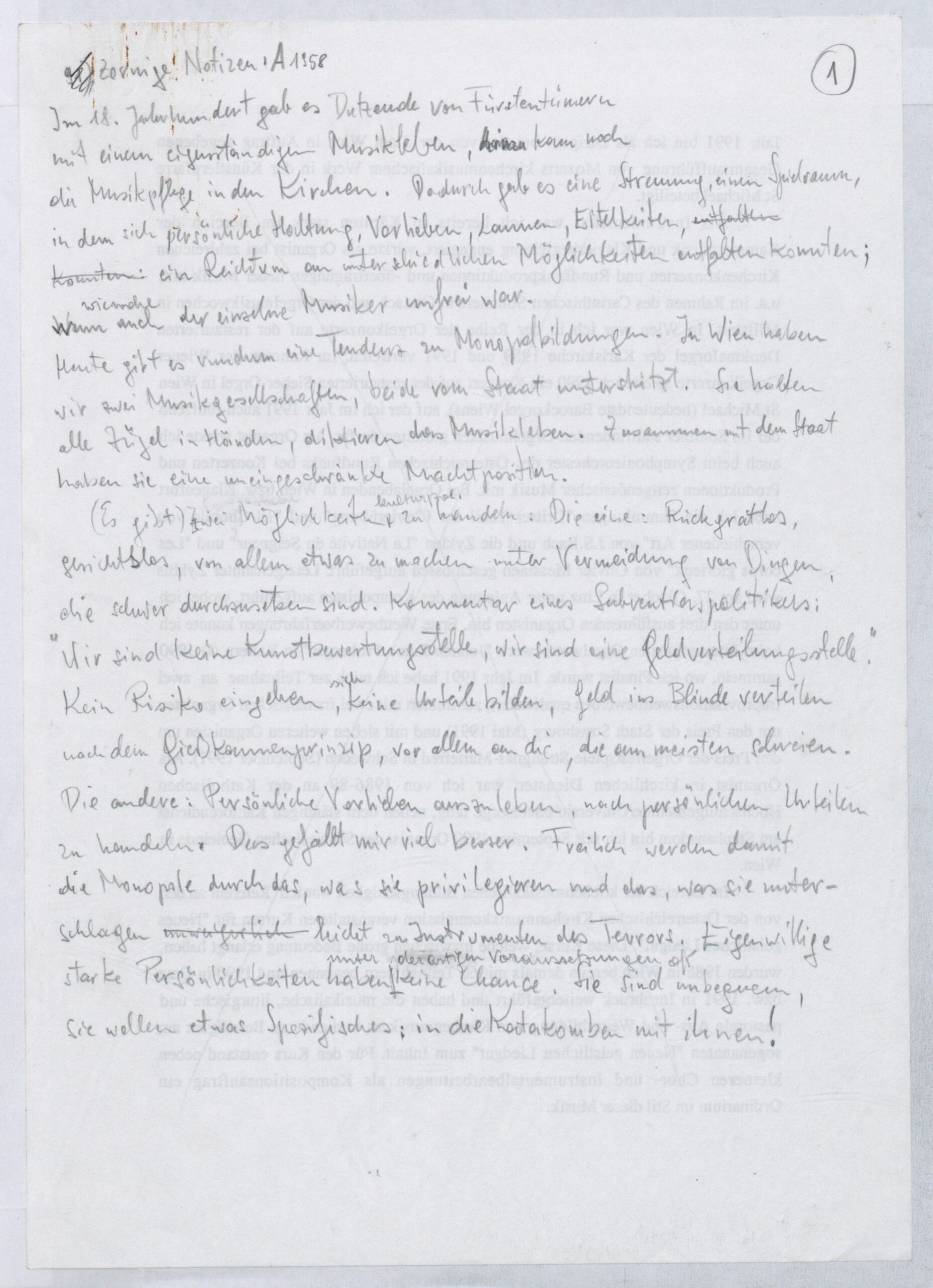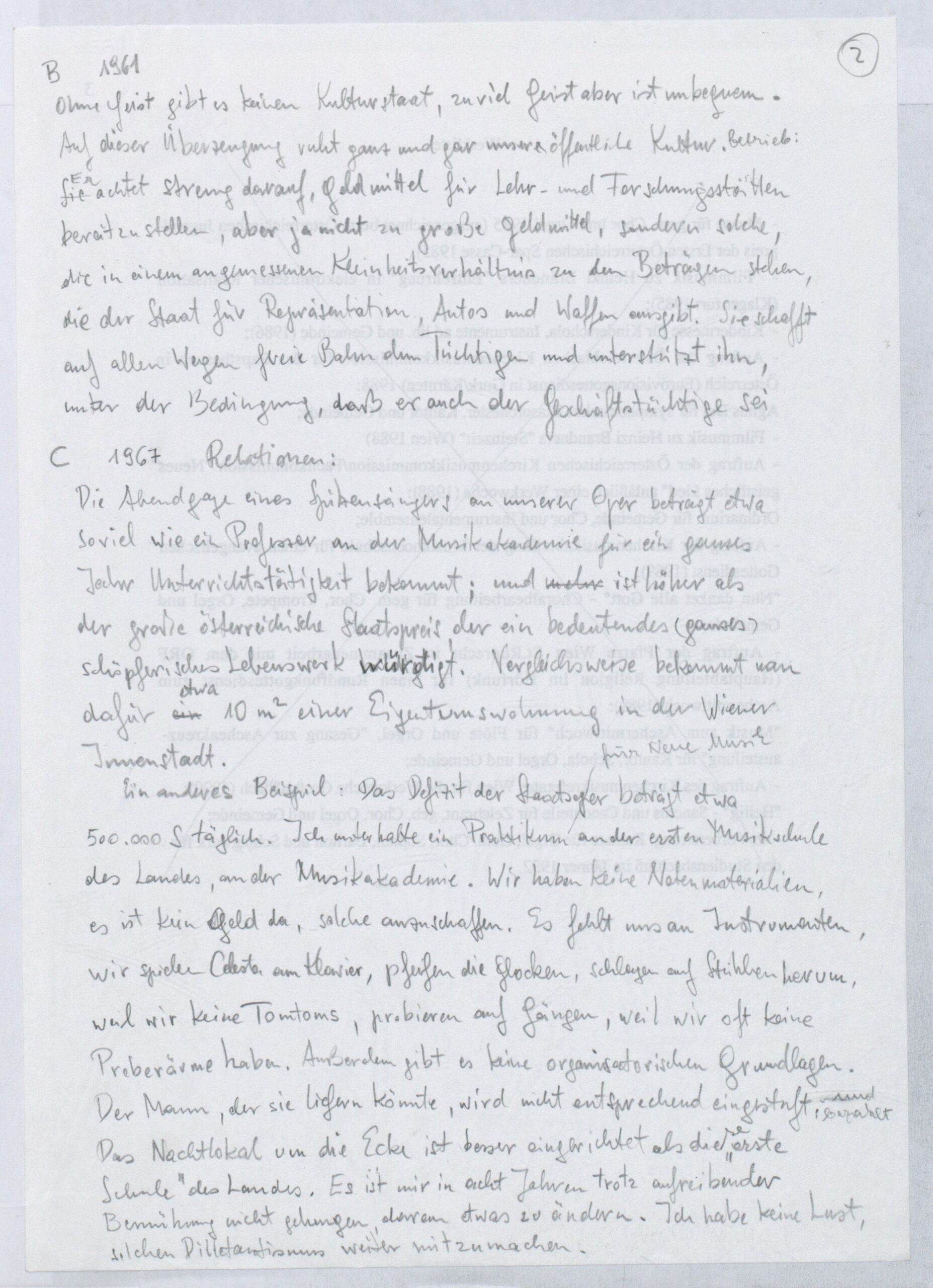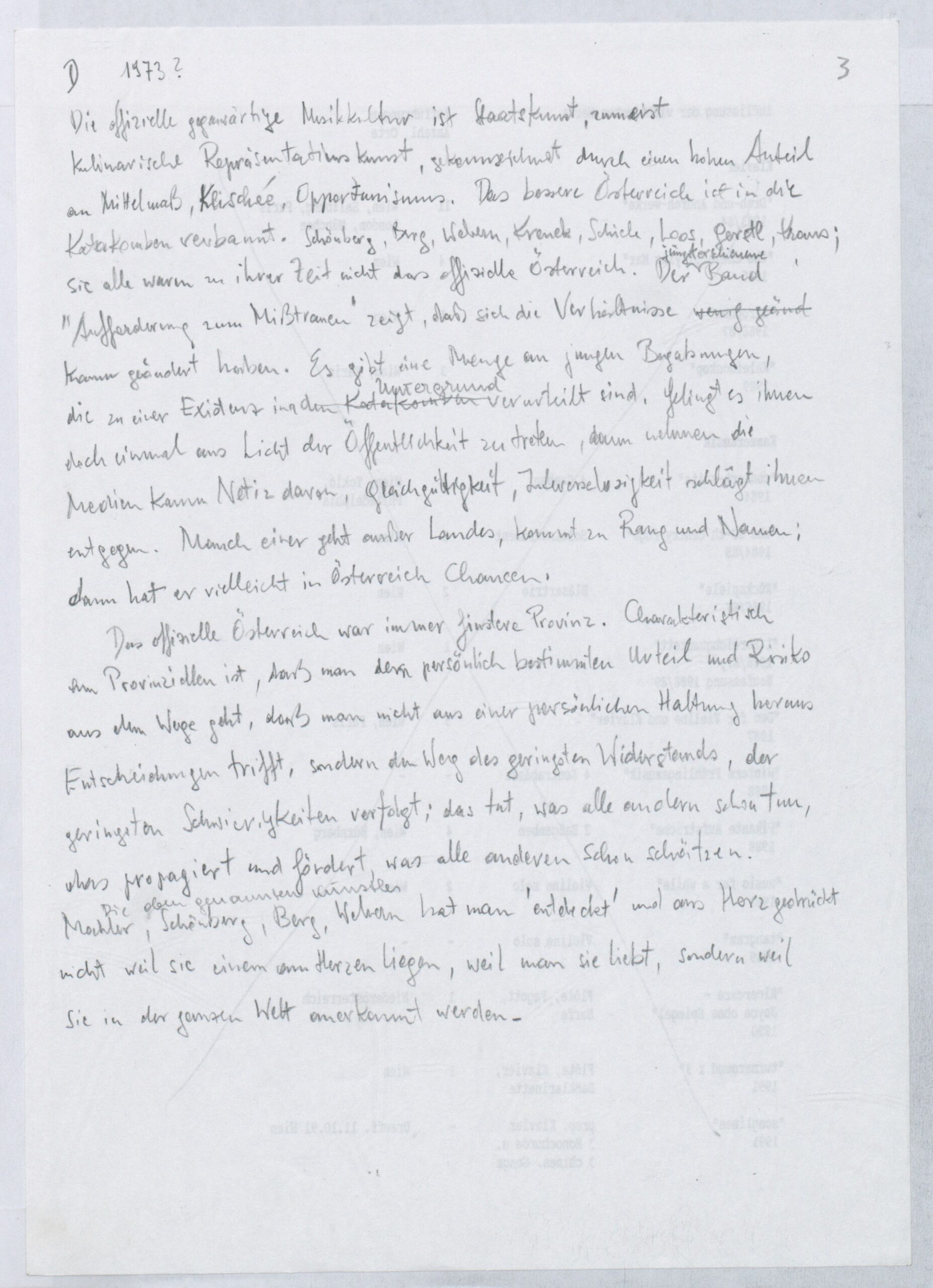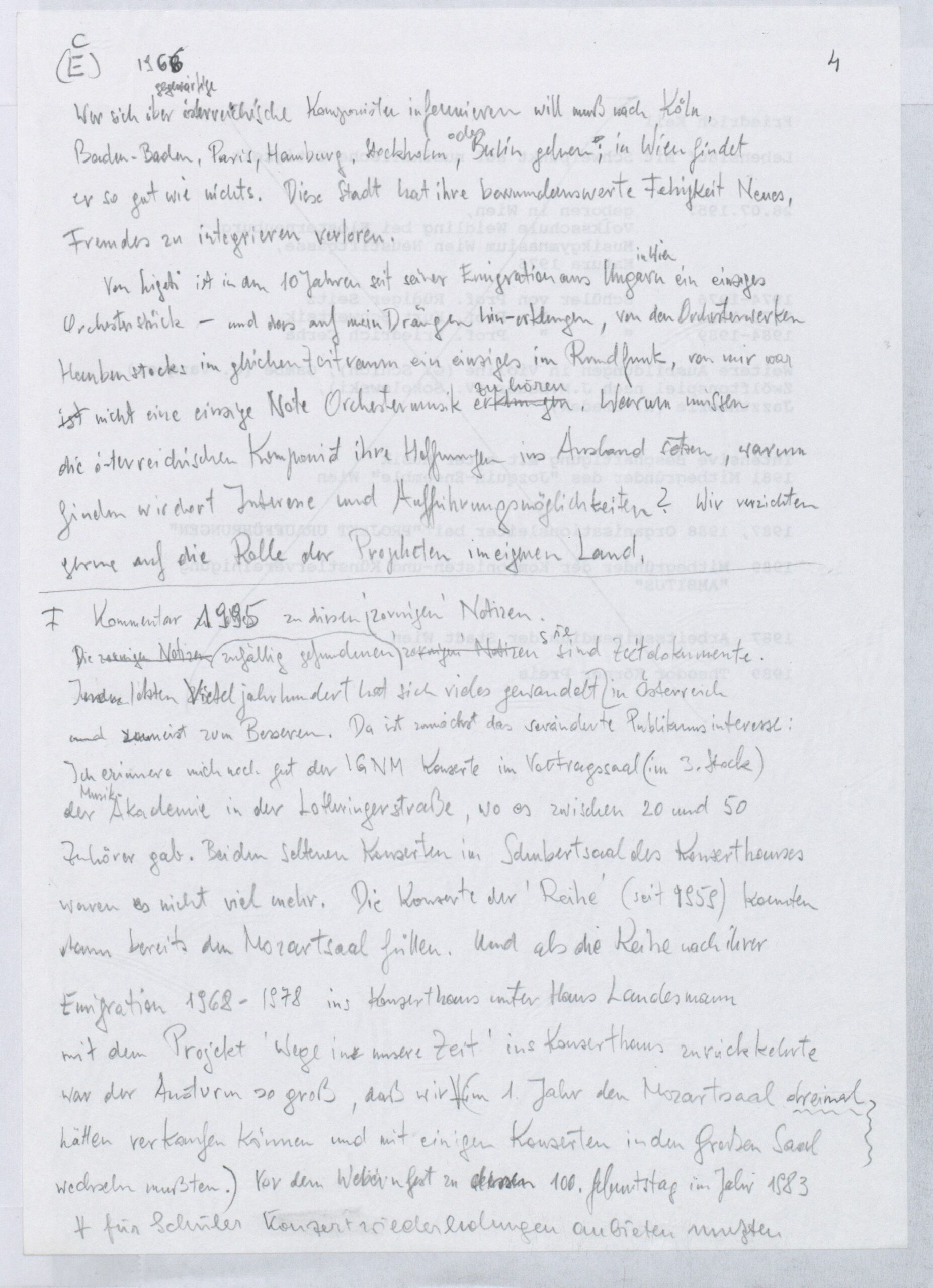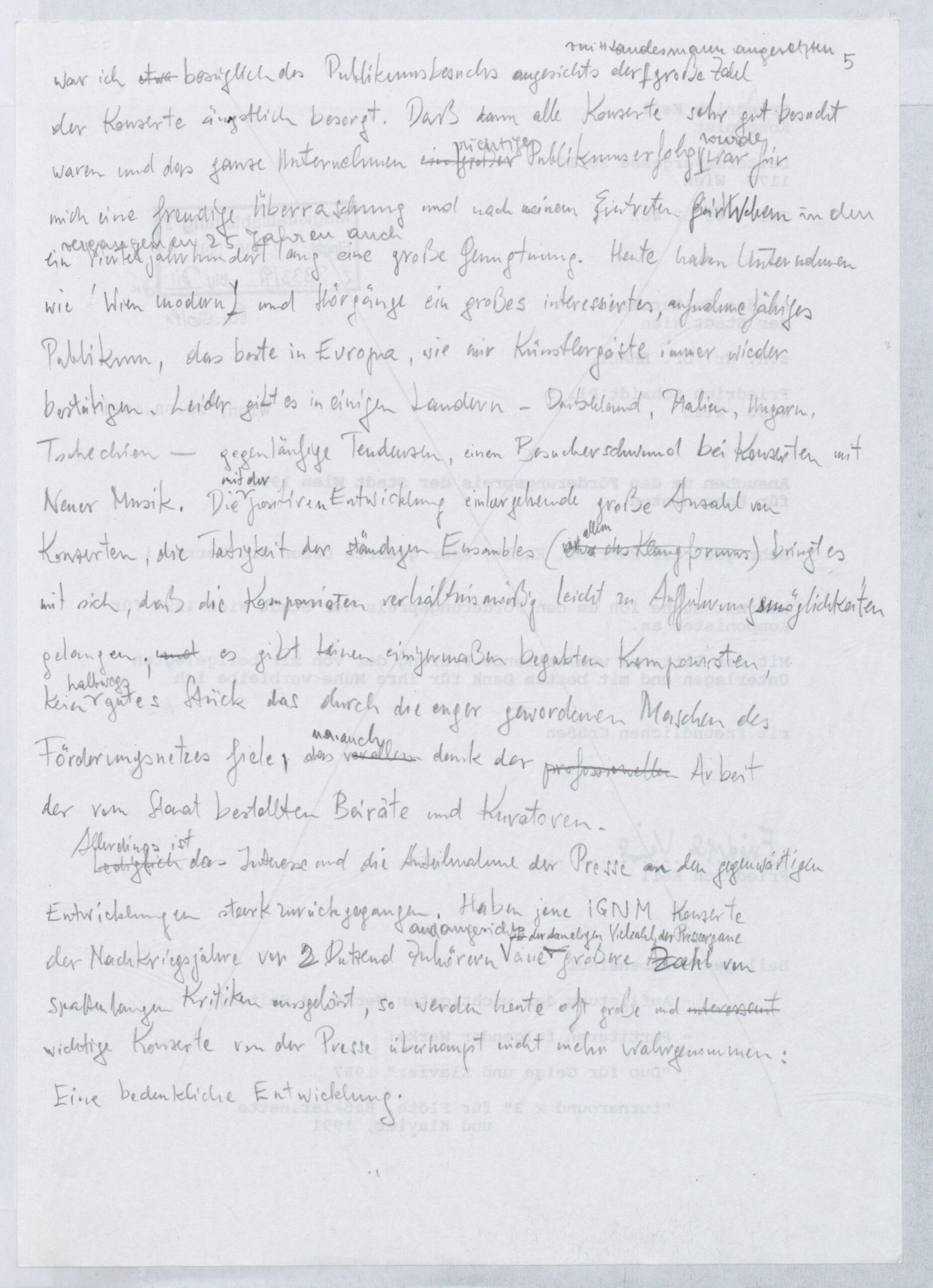Der Homo Politicus
Cerha, Wiener Metropol 1983
The first Keintate was premiered on 20 June 1983 in the Metropol club, a “real life” public space in the Vienna suburbs. Cerha gave an impromptu speech before the premiere—one of the rare occasions he deliberately stepped up to the lectern.
Image source: Archiv der Zeitgenossen
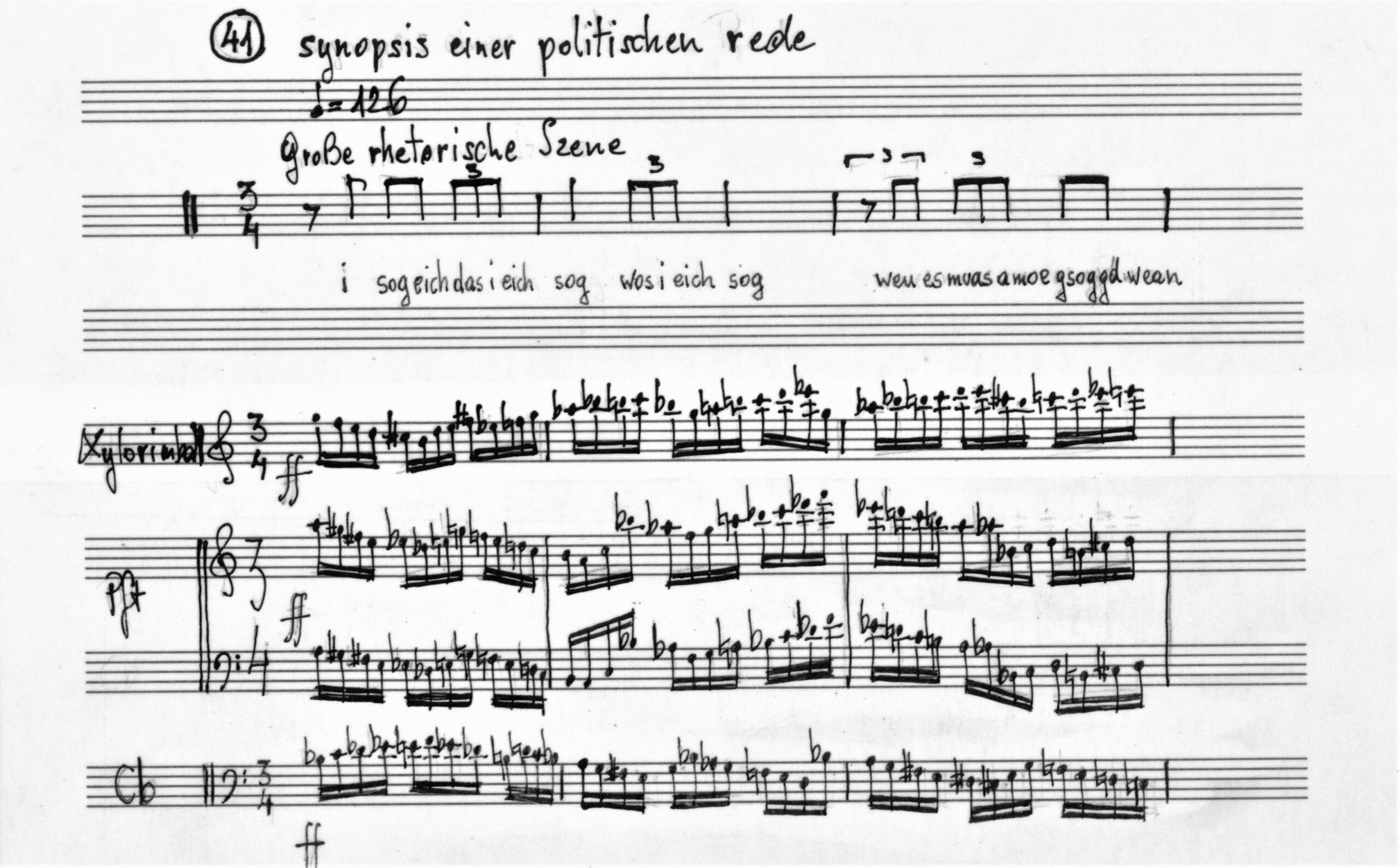
Cerha, Eine Art Chansons, “synopsis einer politischen rede”, autograph (excerpt), AdZ, 00000091/140
Synopsis einer politischen Rede
HK Gruber (chansonnier), Kurt Prihoda (drums), Rainer Keuschnig (piano), Josef Pitzek (contrabass), production Kairos 2019.
Cerha, the Anti-Fascist

Headline of an article on Der Rattenfänger, Bühne Wien, September 1987,AdZ, KRIT0002/81 (“I never liked to keep my mouth shut”)
In the summer of 1936, I travelled to a children’s convalescent home in Seebenstein following a bout of tuberculosis. I had, of course, my violin with me. Not far from where we played ball in the field, there were gypsies camped in the forest. I heard a violin being played, followed the sound, couldn’t get enough of hearing and seeing this old gypsy making music. I hated the convalescent home with its haughty airs, rituals from the youth movement, and incessant blaring of disgusting songs, that idiotic “Wagen, der rollt”. What a small step it was from there to the Hitler Youth! Since I wasn’t interested in the required afternoon ball game, I took my violin into the woods and played. The old gypsy suddenly stood in front of me and asked if I wanted to come with him. I didn’t have to think about it, I said yes, packed my violin, went along, and was given a seat in the trailer. I was immediately accepted by everyone with no formal introduction. The old man’s wife hugged me; she didn’t even have to bend over much. She pressed me into the folds of her long, thick, not particularly clean skirt, smelling very motherly, warm, and of sheep, and just like that I was her child.
Friedrich Cerha
Schriften: ein Netzwerk, Vienna 2001, p. 22
Cerha’s compassion for those discriminated against corresponds with his criticism of the Völkisch movement. He escaped the rampant indoctrination around him not only through his own personal resistance, but also thanks to his adult role models. In 1934, his father took him to the sites of the ongoing “battles between Austro-Fascists and Socialists for the Ottakringer Workers’ Home”Schriften: ein Netzwerk, Vienna 2001, p. 18 to show his son “what people can do to people”. Cerha’s first violin teacher, a Czech, likewise encouraged his pupil’s political awareness at an early age:
Some of my parents’ friends were Czech and fate would have it that all of my violin teachers were Czech and had studied at the Ševčik school. The first was named Pejhovsky. […] Not only do I owe my thorough violin training to him, he also gave me Tolstoy, Dostoyevsky, Chekhov, Hašek, Gorki, and others to read when I was 11, and—a fanatical anti-Nazi—sharpened my political acumen. After the Condor Legion was sent to support Franco in the Spanish Civil War, “Hitler is war” became a constant expression of my father’s. I owe it to him and Pejhovsky that I didn’t get caught up in any of the Nazi ideals as a young person.
Friedrich Cerha
Schriften: ein Netzwerk, Vienna 2001, p. 20
Music as a Mirror of Society
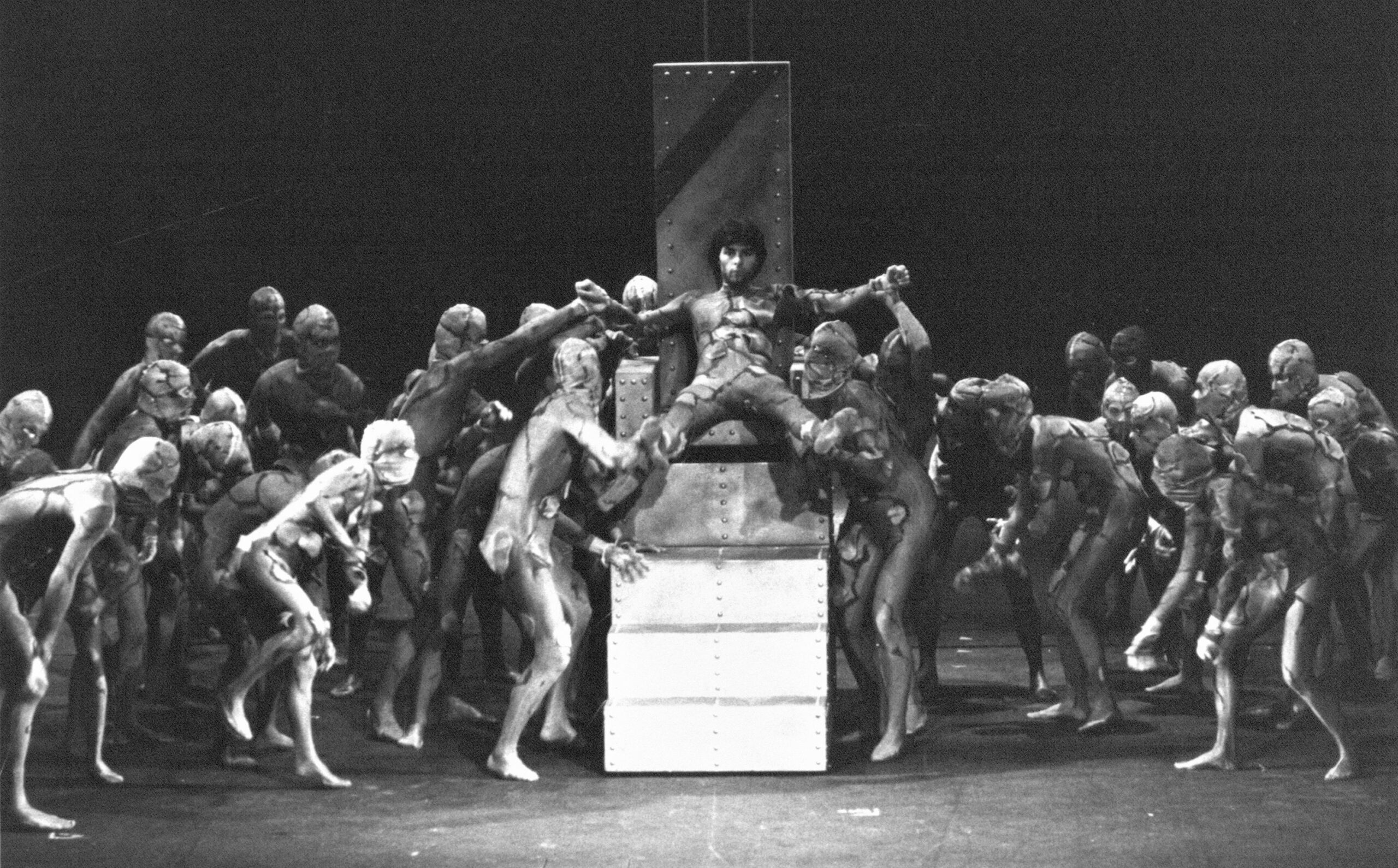
“Parable of Rulers and the Ruled”, scene for Hauptsatz IV B in Netzwerk
Cerha, written protest against an exhibition opening by Kurt Waldheim, 1987, AdZ, TEXT0036/2
Living Cultural Policy
The uprising against Waldheim is one of Cerha’s many statements critically addressing (cultural) politics. A considerable volume of writings, whether speeches, letters, or essays, testifies to his commitment, giving the “homo politicus” a clearer profile. At the same time, Cerha’s relationship to this role remains ambivalent. He sees himself not as a rhetorician, but rather as an advocate of a (musical) culture that is insufficiently represented in public life. Defending this culture, decrying the grievous failings and deficits of cultural policy, or, in short, giving his profession and the actors therein a voice—this is motivation enough for him to raise his public voice.
Cerha with Minister Herbert Moritz, 28 October 1986.
Cerha, letter to Minister Herbert Moritz, excerpt, 28 August 1986
Angry Notes: Manuscripts and Transcriptions, AdZ, TEXT0024

